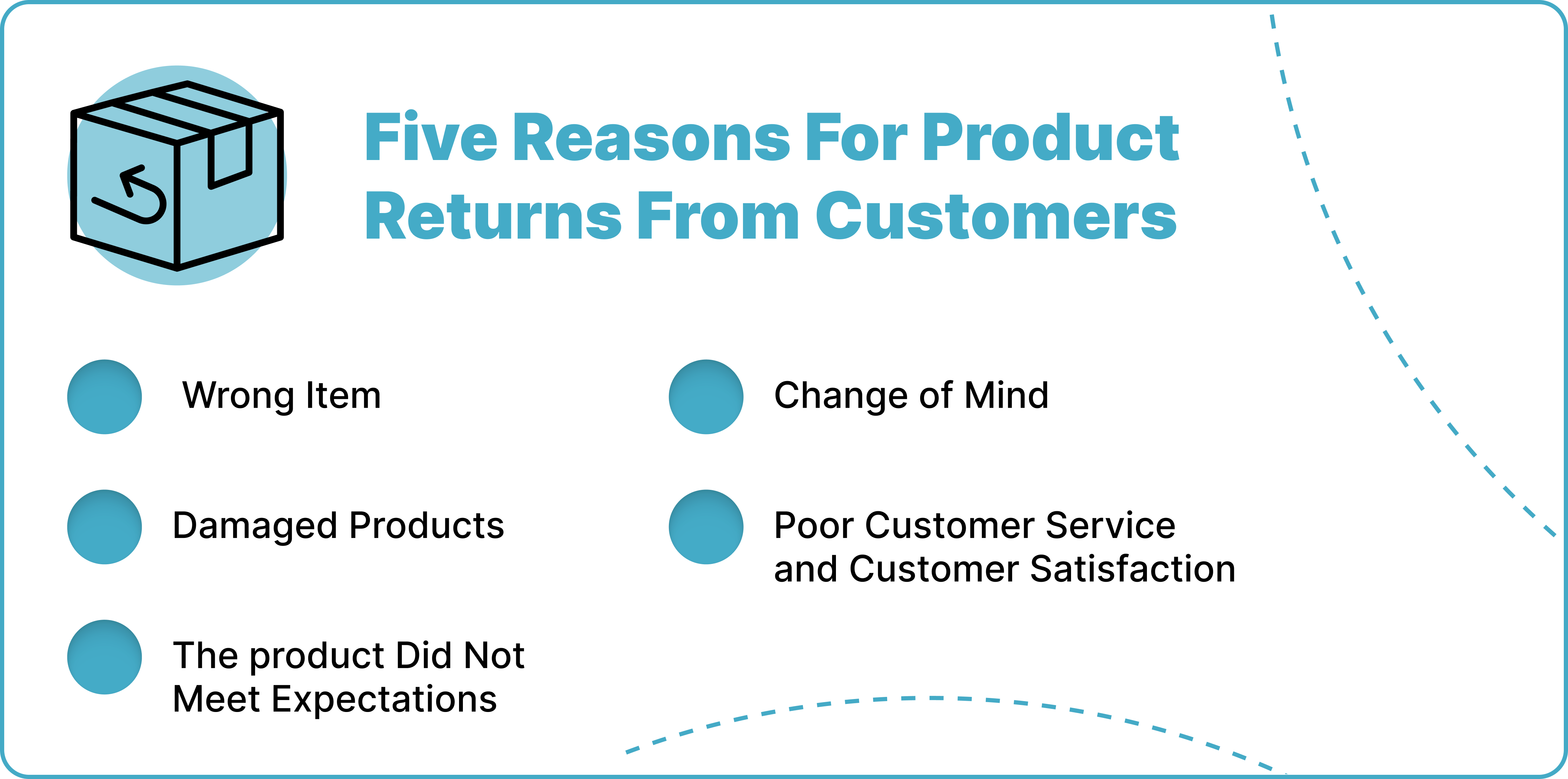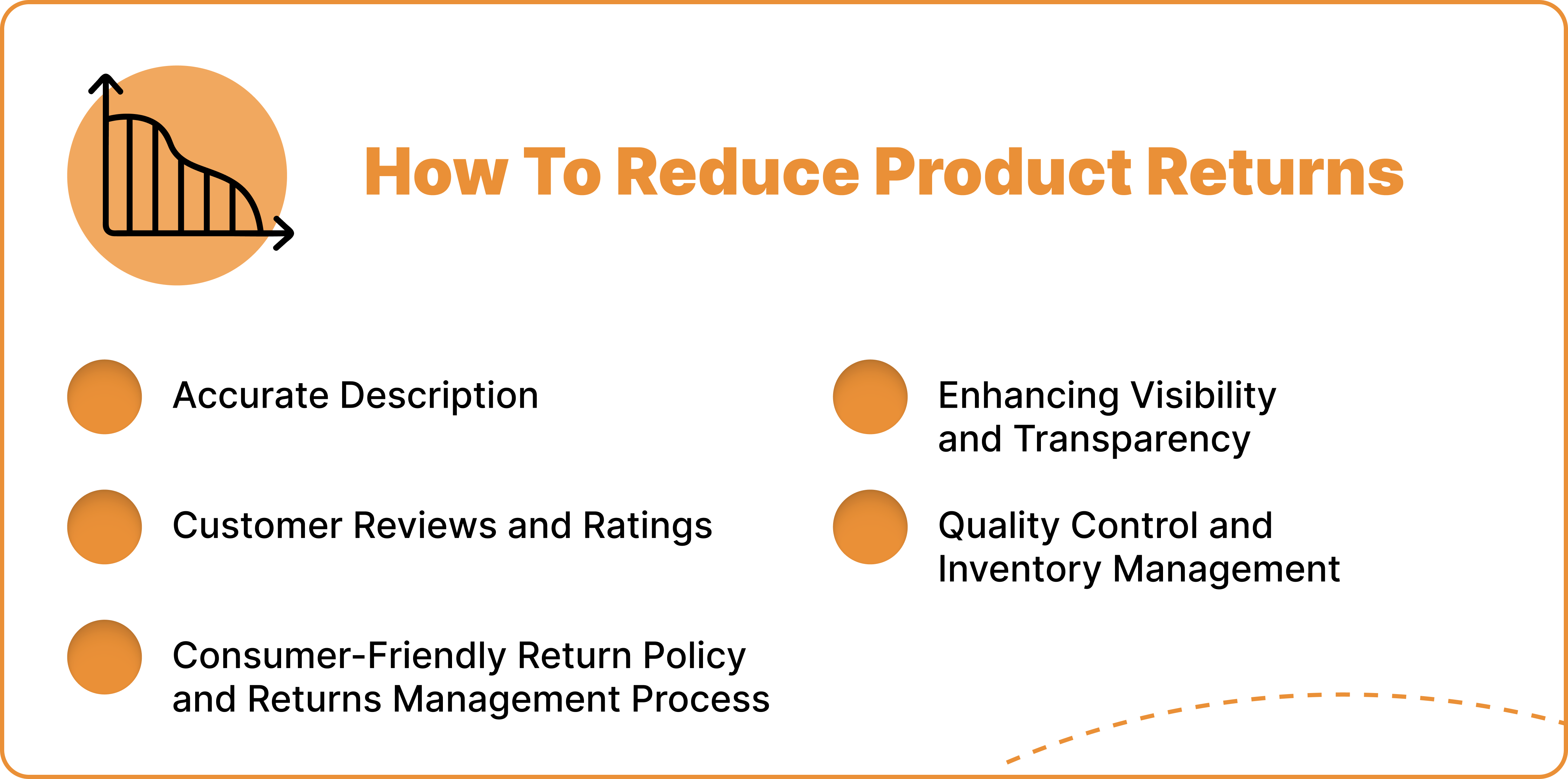Why Do Customers Make Returns?

A third of customers across multiple industries will return purchased goods, contributing to a significant return rate, but the reason for each return will differ.
Customer returns are an inevitable part of the retail and e-commerce landscape. Recognizing this fact and understanding the reasons behind the returns is key for retailers, supply chains, and e-commerce platforms. This knowledge can help them enhance their operations to effectively mitigate or manage these returns, ensuring a smoother business process.
This article will explore the reasons behind these product returns and how businesses and supply chains can manage or reduce them.
Five Reasons For Product Returns From Customers

Product returns happen for any number of reasons.
However, too many product returns could be a significant issue for the affected supply chain. Understanding them is a core step towards fixing or managing the customer’s experience and a testament to a business commitment to customer satisfaction. A well-defined return policy can help manage these returns more effectively.
1. Wrong Item
Sending the wrong item or product to the consumer will call for returns.
There are two major reasons why this happens. It could be because of a wrong purchase on the customer’s side or it could be because the supply chain processed the wrong order for the consumer. Both of them are particularly painful because they are one of the easiest to avoid, emphasizing the need for accuracy and diligence in our order processing.
Wrong items usually apply to e-commerce or online retail stores, and the mistakes, though quite costly, can be avoided by improving order accuracy and the description of products on the front end.
2. Damaged Products
When a product is damaged or doesn’t perform as it should, customers will return it.
Damaged products can happen during transit, it could also result from poor handling of the product during processing, and finally, it could be because of a poor quality assurance process. All these are critical problems, making it difficult for the supply chains to manage the customers, especially when they happen repeatedly. Damaged or poor quality products not only lead to returns, but they will generally paint a bad image of the brand, which is worse.
However, there are times when the damages may be the customer’s fault, so having a great inspection and auditing team is important. It will also help prevent fraud.
3. The Product Did Not Meet Expectations
There are many cases where the business “oversells” a product to get the customers to buy.
This can be dangerous because the business is promising what its supply chain cannot deliver. It is also dangerous because the point of having or providing the reverse logistics process is that customers can buy the product, and if they don’t like it, they can always return it. When the product is underwhelming, there will be plenty of returns. More importantly, the customers will feel that the promise was not met, which could impact the brand’s image but, more importantly, customer loyalty.
Retailers must always ensure that customers get what they pay for to maintain high levels of product satisfaction.
4. Change of Mind
Through no fault of the retailer or business, consumers will often change their minds after purchasing a product, and when they get it, they realise it was a mistake or an impulsive buy and then begin trying to return it.
Sometimes, they may want to purchase another item in the store, using store credit and other times, they would simply demand their cashback. How the business and supply chain manage this type of situation is entirely based on what the return policy demands. Another aspect of this is called “wardrobing”. This denotes the behavior of some bad players who buy from retailers, use it to accomplish their goals, and then turn around and return such items.
Whether for legitimate reasons or fraudulent activities, such as return fraud, the return policy is the best tool to combat these.
5. Poor Customer Service and Customer Satisfaction
When customers experience poor service in the delivery process, it could cause them to return the products outright.
A great example of this is late deliveries or lack of effective communication for online purchases. When there is poor customer service, it makes the customers consider their options, especially in cases where they have chosen the payment-on-delivery option, impacting customer retention.
How To Reduce Product Returns

Although there are a number of reasons for product returns, there are strategies or solutions for retail businesses and supply chains to mitigate it and ensure that customers do not overwhelm the returns process or return management system.
Implementing these strategies can significantly contribute to return prevention.
1. Accurate Description
Accurate product information does a lot to inform the customer about the product and what they can expect by purchasing it.
According to this study, 56% of consumers say that poor or wrong product description is the reason for product returns, but in 2016, the number of customers that thought this was considerably less. This means that more retailers, whether online or in-store, are doing a bad job. With accuracy, more retailers can drastically reduce the volume of goods returned, turning it into a competitive advantage.
When improving product description, consider size, nature, specifications, make, warranty, and sometimes expectations.
2. Customer Reviews and Ratings
In managing or mitigating product returns, hearing from the main source will streamline the solution a great deal.
Customer reviews and ratings are a great way to get customer insights and see what they don’t like about the product, delivery, or returns management processes. But it also helps to inform other customers about expectations. By constantly taking feedback from customers, the supply chain can find out what they do wrong and what they do right, giving them an opportunity to capitalize on the latter.
If the service is great, the product is great, and the customers are happy, reviews and ratings are a great way to showcase that to other customers.
3. Consumer-Friendly Return Policy and Returns Management Process
Draft the return guidelines to itemize what customers should expect from the supply chain, its returns management process, and the type, make, and days acceptable for returns.
While the return policy serves as a guide for consumers to effectively return orders, it can also help businesses avoid fraudulent activities or scenarios. This is why the returns policy needs to be detailed, easy to understand, and available so that customers who need it are able to locate it on the platform or website without trouble. 45% of U.S. shoppers have committed some form of return fraud or policy abuse, making this a very relevant issue to retailers.
However, clarity and details can help eliminate fraudulent activities.
4. Enhancing Visibility and Transparency
Visibility and transparency, including order tracking, make customers a part of the process.
Make customers an active part of the value chain — from order to processing and then to delivery. If customers have this information at their fingertips, it does a lot to manage expectations and will help them be more understanding, even when there are delays. Transparency also significantly reduces the number of inquiries, avoiding confrontation and the prospect of a poor or bad customer experience. By ensuring seamless communication with the customer on every step of the process, the customers are able to plan around the receipt of the product, meaning less chance of refusal or returns.
5. Quality Control and Inventory Management
Quality control entails optimizing the inspection process and product checks to make sure the customers get the right products in the right conditions and at the right time. Businesses and supply chains can leverage technology and other innovative approach to ensure quality control across the supply chain. Quality control impacts logistics, inventory management, and returns processing.
ReverseLogix Helps Retailers Reduce Product Returns Through Excellent Reverse Logistics
The ReverseLogix returns management system is the industry’s only end-to-end, purpose-built RMS with configurable and flexible workflows that serve B2B, B2C, and hybrid environments.
Although product returns are inevitable, managing returns can be seamless. At ReverseLogix, we leverage the right solutions, such as helping with effective returns policy, facilitating transparency, integrating returns management software, fraud prevention, and managing customers’ expectations, to reduce the impact of the returns process on the returns management system. ReverseLogix focuses on returns optimization to streamline the process for success.
Connect with us today to instantly improve your returns management.
Frequently Asked Questions
Reducing damaged product returns starts by investing in quality control measures to eliminate bad products from reaching customers. Doing this may also mean using appropriate packaging materials to ensure protection during shipping.
Don’t make promises the supply chain or business cannot keep. Set realistic expectations in product descriptions and avoid overhyping features. Prioritize clear information about materials, functionality, and any limitations.
There are a few things to look out for in a good returns policy:
– Transparent return process
– Clear instructions.
– Reasonable timeframes for return requests
Customer reviews act as a guide that will help others make informed decisions and avoid similar mistakes. However, responding to negative reviews professionally and addressing the concerns raised is important.
Return logistics involves the process of moving returned products from the customer back to the retailer or manufacturer, ensuring efficient handling and processing of returns.
